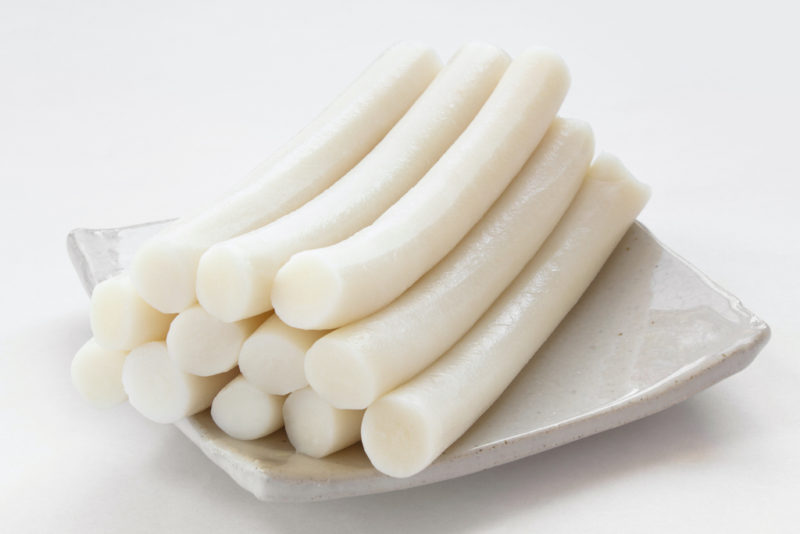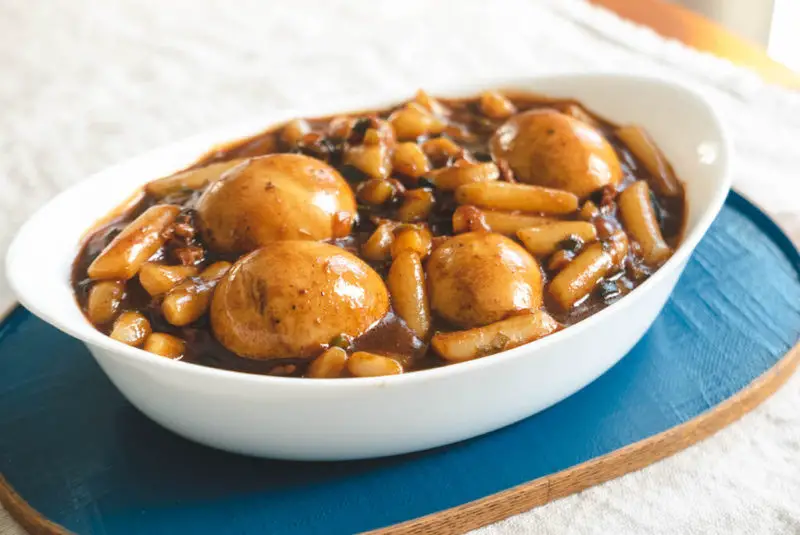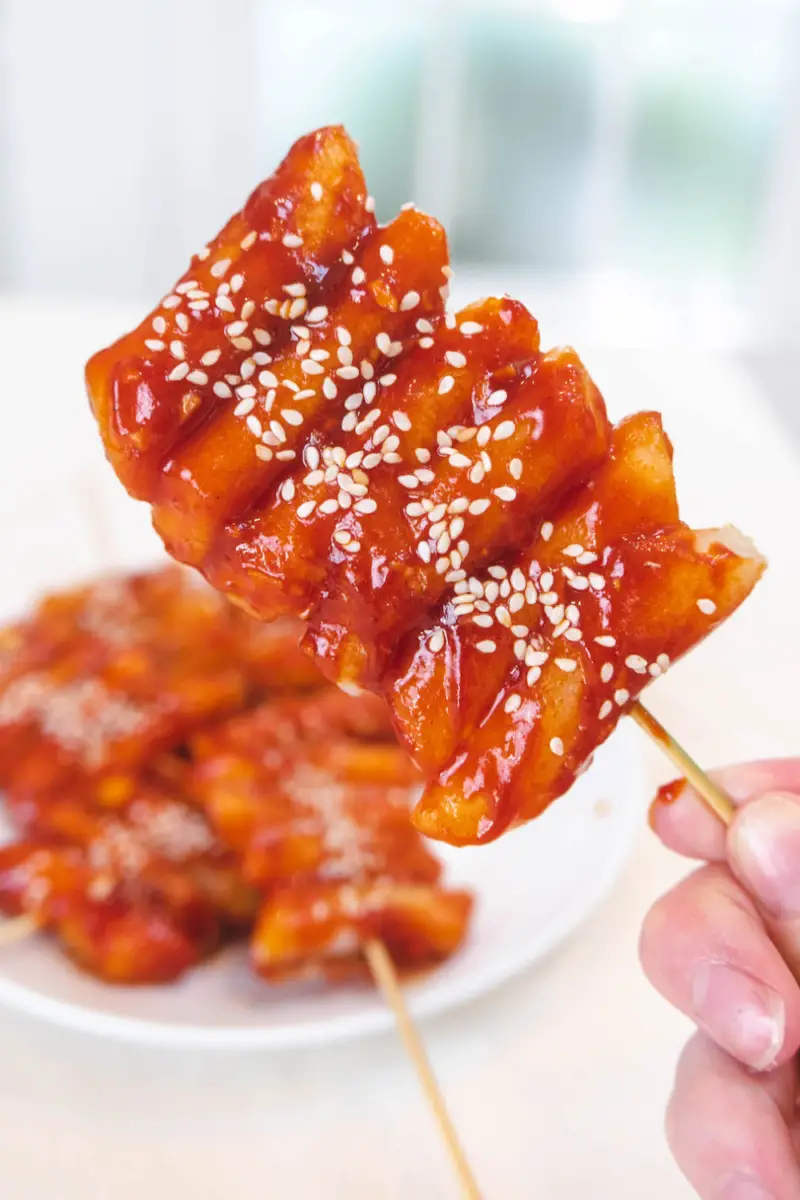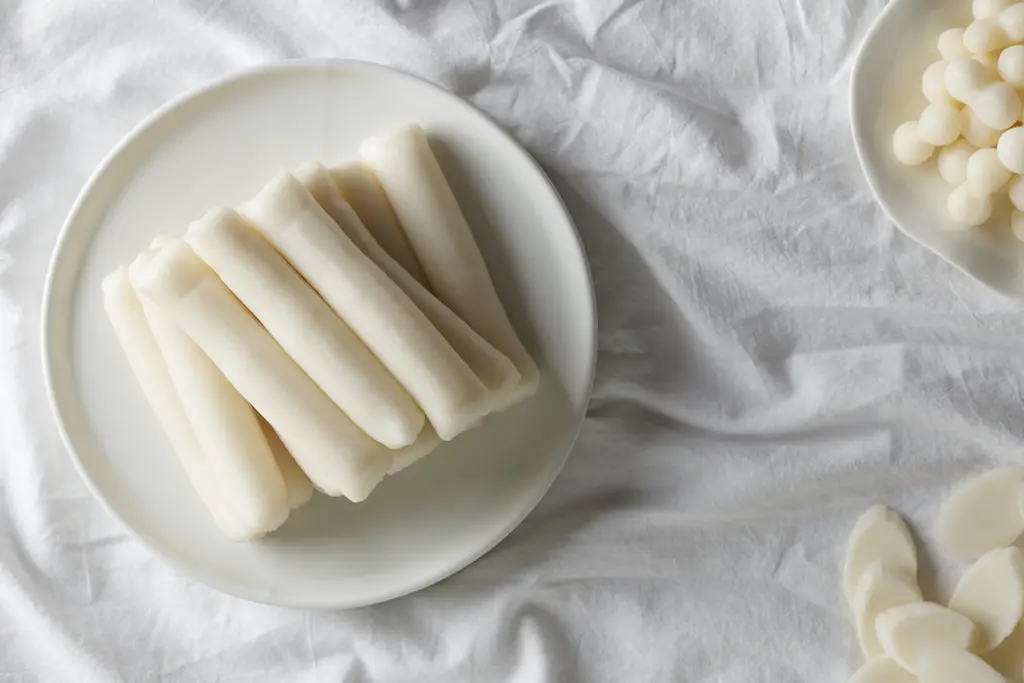This post may contain affiliate links. Please read my disclosure for details at the bottom of this page. As an Amazon Associate, I earn from qualifying purchases on this article about Korean Cylinder Rice Cakes. We hope you enjoy learning about garaetteok!
Do you like tteokbokki? What about jajang tteokbokki or tteokkochi? If so, you have eaten Korean cylinder-shaped rice cakes known as garaetteok! Here, I write in-depth about this ingredient.
Let’s learn about garaetteok below!
What Is Garaetteok (Or Garae-Tteok)?
To learn about garaetteok, we first need to learn about Korean tteok! ‘Tteok’ (떡), translated from Korean to English as ‘rice cake,’ is a type of dish made by pounding and steaming flour made of various types of grains. Such grains can include glutinous and non-glutinous rice, red bean, soybean, mung bean, wheat, and more.
‘Garaetteok’ (가래떡), also known as ‘garae-tteok’ or ‘garaeddeok,’ is a type of Korean tteok. People make this soft and chewy Korean rice cake by steaming non-glutinous rice flour. First, the rice flour is kneaded and pounded before it is stretched and shaped into a cylinder. These cylinder-shaped tteok are used in some of South Korea’s most famous dishes such as tteokbokki!

Garaetteok In Korean Culture:
In English, ‘tteok’ translates to ‘rice cake,’ but what does ‘garae’ translate to?
Unfortunately, the exact origin of the ‘garae’ in the context of ‘garaetteok’ is unknown. There are a few theories though!
- One theory states that the term ‘garae’ comes from the verb ‘garuda’ (가르다). This verb translates to English as ‘to divide/separate/sever.’ People believe the term comes from the process of dividing the rice cake dough into pieces before rolling and stretching it into cylinders.
- Another theory comes from a spade-like traditional farming tool known as a ‘garae’ (가래). This tool can be used by three people at a time. One individual uses the spade part of the tool while two other individuals work with thick ropes that help the digging go faster. Some people believe the garaetteok looks like these ropes attached to the tool. These days, this tool is rarely used in South Korea and is not a commonly searched term.
Cultural Note: If you travel to South Korea, try traveling to Jongno-Gu, a neighborhood in Seoul! There, you can visit the Tteok Museum and Experience Center! Yoon Sookja, the chief director of the Institute of Traditional Korean Food (한국전통음식연구소), founded the museum.
Garaetteok in Korean Cooking:
Below, I list a few examples of dishes that use Korean cylinder rice cakes. Let us know if you try one of these at home!

Examples of Rice Cakes In Korean Cooking:
- Tteokbokki (떡볶이): Tteokbokki refers to stir-fried rice cakes in a spicy gochujang-based red sauce.
- Jajang Tteokbokki (자장 떡볶이): Unlike tteokbokki, you stir fry the garaetteok in a sweet black bean sauce known as chunjang. This sauce is a popular ingredient in Chinese-Korean dishes. Try making our one-pot version of this dish!
- Tteokkochi (떡꼬치): Tteokkochi is a popular Korean street food made by preparing garaetteok on a skewer. The tteok skewer is grilled and coated with a spicy red sauce. Learn how to make tteokkochi from our site!
- Tteok Guk (떡국): In English, tteok guk translates to Korean rice cake soup. This soup is an important cultural dish during Lunar New Year. For this soup, people buy pre-sliced tteok or cut the garaetteok into thin diagonal slices.
Garaetteok Frequently Asked Questions:
Now that we learned about garaetteok (Korean rice cakes), we want to answer some questions you may potentially have as well! If we do not answer your question, feel free to leave a comment in the section below or email us at [email protected].
What Do Korean Rice Cakes Taste Like?
On its own, garaetteok does not have much flavor. When prepared with other ingredients, the flavor slightly penetrates that outside layer of the rice cakes. A good example of this is the spicy sauce used in tteokbokki.
Not only does garaetteok add an amazing chewy texture to the dish, but it also acts as a sticky vehicle for the different flavors in stir-fry sauces, soups, and stews.

Where Do You Buy Korean Rice Cakes?
Nowadays, people in South Korea do not typically make these cylinder Korean rice cakes from scratch. Instead, they buy these at the grocery store.
While uncommon in most grocery stores in countries like the United States, you can easily find these online or at your local Asian market. Shop for tteok in stores such as H-Mart or Amazon!
If you cannot find garaetteok, you can easily making tteokbokki using rice paper! Learn how to make rice paper tteokbokki on our website!
Where to Buy Korean Ingredients Online?
Nowadays, there are many online options to choose from to order Korean food online. These websites are not limited to but include:
- Amazon
- H-mart
- Hanpoom
- Wooltari
Are Korean Rice Cakes Gluten-free?
No! Not always!
Traditionally, garaetteok did not contain gluten. These days, lots of pre-made tteok contain wheat flour to make it easier to shape and use. Always read the packaging when buying rice cakes if you have gluten intolerance or celiac disease.
We Hope You Enjoyed Learning About Garaetteok (Korean Rice Cakes)!
In the end, we hope you enjoyed learning about garaetteok (Korean rice cakes)! If so, let us know in the comment section!
If you would like to read more about cooking, you can find further recipes on our blog. We listed some of our favorite Carving A Journey Korean recipes below! For reference, many recipes are influenced by our blended Korean and Southern heritage.
Korean Ingredient Articles:
- Sesame Seeds in Korean Cooking
- Dried Seaweed Sheets in Korean Cooking
- Persimmons in Korean Cuisine
- Chunjang Paste (Black Bean Paste)
- Perilla Leaves in Korean Cuisine
- Gochugaru (Korean Pepper Powder)
Further Carving A Journey Korean Recipes:
- Kimchi Rice Balls (Kimchi Jumeokbap)
- Yakult Soju Popsicle
- Greek Momo
- Yakult Soju Cocktail
- Gochujang Mayo Recipe
If you have any questions or comments, you can also email us at [email protected].
And, finally, we would love to hear from you through our social media as well! You can follow us at @carvingajourney on Instagram, Facebook, and Pinterest. I also started a vlog Youtube channel! Or, if you would like more articles like these, you can subscribe to our blog by joining our mailing list. Let us know if you cook using garaetteok! Thank you so much for stopping by!
Carving A Journey is a participant in the Amazon Services LLC Associates Program, an affiliate advertising program designed to provide a means for sites to earn advertising fees by advertising and linking to Amazon.com. Although we may earn commissions for our endorsement, recommendation, testimonial, and/or link to any products or services from this website, these opinions are my own and I fully support these products.

